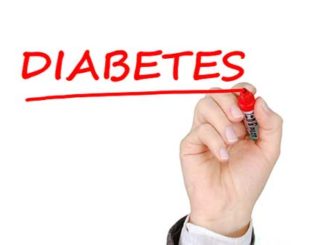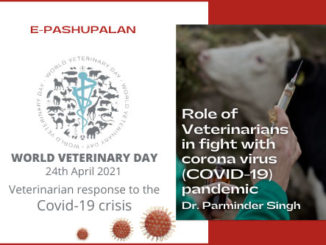Introduction
The Corona virus pandemic is an ongoing global pandemic of coronavirus disease 2019 (COVID-19) caused by severe acute respiratory syndrome coronavirus 2 (SARS-CoV-2). A pandemic is a widespread epidemic that has spread throughout an entire area, such as a country, continent or throughout the world. The virus was first identified in Wuhan, China in December 2019. The World Health Organization declared a Public Health Emergency of International Concern due to coronavirus on 30 January 2020 and later declared a pandemic on 11 March, 2020. On 30 January 2020, India reported its first case of COVID-19 in Thrissur, Kerala from the students returning from Wuhan. Coronaviruses are zoonotic which means that they spread between animals and humans. Human coronaviruses were first discovered in mid 1960s. It is a new strain of coronavirus that was not found in humans before. It was called ncov initially in 2019, then was called COVID-19 on 12 February 2020. A growing number of patients have been reported with COVID-19 infection without any history of animal contact, which suggests human to human transmission. COVID-19 is transmitted most frequently by contact, distributed between close contacts from person to person. It can also occur through respiratory droplets formed when an infected person coughs or sneezes, similar to the spread of influenza and other respiratory pathogens. Common signs and symptoms include fever, body malaise, sore throat, dry cough, diarrhea, runny nose, fatigue, headache and chills. Veterinarians are considered to be essential health care workers who can work during this critical pandemic situation. They have the responsibility of both animal and human well-being. Veterinarians have an important role to play in providing suggestions to pet and animal owners about general medical care and routine vaccination of animals.
A brief overview of impact of COVID-19 in India
The world is globally battling and suffering from the COVID-19 pandemic. Already more than 138 million cases have been reported all over the world. On 24 march 2020, India was declared to be in lockdown by Prime Minister Mr. Narendra Modi for 21 days and then this date was extended till 3 may 2020. The lockdown disrupted food supplies to the people and threatened to trigger a food crisis. By the first week of April 2020, essential industries such as growing, harvesting and food deliveries were allowed to operate. The COVID-19 lockdown in India has left tens of millions of migrant workers unemployed.
COVID-19 vaccination in India
Various laboratories in India had been trying to develop a vaccine against COVID-19. In September, India’s Health minister, Dr. Harsh Vardhan, announced that the first vaccine for use will be available by first quarter of 2021.30 million health workers directly dealing with COVID patients, especially doctors and other medical personnel were supposed to be the first to get the vaccine.
On 1 January 2021, the Drug Controller General of India, approved the emergency or conditional use of AstraZeneca’s COVID-19 vaccine AZD1222 (marketed as Covishield). Covishield is developed by the University of Oxford. On 2 January 2021, BBV152 (marketed as Covaxin), developed by Bharat Biotech in association with the Indian Council of Medical Research and National Institute of Virology received approval from the Drug Controller General of India for emergency or conditional uses. Centre for Disease Control and Prevention recommended that anyone who provides veterinary services be prioritized in Phase 1b of COVID-19 vaccine distribution plans as front-line essential workers.
Care of pets during COVID-19 Pandemic
Pets, indeed, are the ones which contribute to better health, reduce stress and feel more comfortable in the days of self-isolation. Apart from vaccination for pets, we also need to take extra care of them and maintain good hygiene for safety. Though COVID-19 is said to be originated from an animal source, there is still no proof or evidence that animals including pets are the carriers of infection.
One-Health approach for tackling COVID-19 pandemic
This pandemic awakens the need for longstanding and sustainable One Health collaboration which can take many forms. Beyond collaborative research, the animal health sector, and in particular, veterinary services, contribute in various ways towards building a common response to the pandemic. It is crucial that veterinary services continue to implement their multiple activities, which contribute to ensure continuity in safe food provision for populations and to sustain their subsistence. The downstream effects of COVID-19 on economies, animal health and food security remain as important as anything else.
Role of OIE in COVID-19 crisis
Through its mission to set animal health and welfare standards, to inform and to build capacity, the OIE has a role to accompany Veterinary Services across the world for addressing the situation. It has put in place a response mechanism to support them in several fields of their work. The OIE liaises closely with its Tripartite partners, WHO and FAO. Several OIE expert groups are developing scientific advice on research priorities, sharing results of on-going research in animals and developing scientific opinion on the implications of COVID-19 on animal health and veterinary public health. The OIE has also developed high level guidance for veterinary laboratories working with public health services to support testing of human samples and is currently developing guidance on the circumstances under which exceptional testing of animals might be justified.
Contribution of the veterinarian in COVID-19 crisis
Veterinarians have shown their rigorous commitment to support the work of human health authorities during COVID-19 pandemic. Veterinary laboratories have used their experience and expertise in high throughput testing capacity of infectious diseases to engage in activities such as surveillance screening, testing human samples, thereby supporting the diagnostic capacity of human health services. Some veterinary clinics have been donating essential materials such as personal protective equipment, ventilators and masks. Veterinary professionals have also been volunteering in hospitals and laboratories when human resources are not available. In some countries, veterinary epidemiologists have been supporting their counterparts in the public health response to track the disease in humans and to support the development of effective public health measures.
Veterinarian’s role in pandemic situation
A veterinarian may get engaged in mass campaigns and other extension services along with other professionals so as to aware more and more people especially illiterate and poor people regarding the precautions to be taken during COVID-19 pandemic and vaccination protocols. The voice should possibly reach to each and every person of the area concerned so that this pandemic can be controlled in time with minimum economic and social impact as possible. Veterinarians can also be volunteers for treating the sick animals or pets in the pandemic situation and also can provide food, water and shelter to the needy ones like stray dogs, etc. Veterinary doctors have been active in building a well-respected companion animal medicine facility that promotes the essential human-animal relationship. Many people tell about social and physical advantages of having a pet as a result of their loneliness during the pandemic. Leaders of the field should embrace the opportunities provided by the COVID-19 pandemic to widen and diversify veterinary medicine’s societal benefits so that each and every person get maximum profit out of it.
Prevention
Confirmed or verified case should be reported within 24 hours and promptly informed to health care team and managed through health care facilities. We should always wash our hands with soap and water for at least 40 seconds. Sanitizers can also be used if soap and water is not available. We should avoid touching our eyes, nose or face with unwashed hands. We should avoid contact with those people who are sick. In order to protect people who are at higher risk like infants and adults, we should practice social distancing. We should cover our nose with cloth or tissue when we cough and/or sneeze. We should clean and frequently disinfect touched surfaces daily. If surfaces are dirty, we should clean them with the help of detergent or soap and water prior to disinfection. We should avoid travelling to places with COVID-19 recorded cases. The best weapon to fight COVID-19 and to avoid the spread of the virus is to stay at home. Vaccination protocols should be correctly followed by each and every individual whosoever receives the vaccine dose.
Conclusion
This pandemic effects populations in various ways and reminds us that multi-sectoral collaboration, in line with the “One Health” approach and the sharing of expertise are more important than any other thing. Yet, uncertainties remain and much work still needs to be undertaken to better understand the origin of the virus and how it entered the human population. Scientists are working around the clock to better understand the virus and its evolution, to develop interventions, and to enhance capacity to respond to this human health crisis. The unprecedented nature of this pandemic and the mysteries around this virus require new and innovative approaches to tackle it. These strategies can only be developed through cross sectoral collaboration and collective action to fight against COVID-19 pandemic. It should not be overlooked that veterinary services lead on a regular basis to meet essential needs that are severely effected in the current pandemic situation. Food protection, animal welfare and livelihood are inextricably related to sound animal production systems. It is important that veterinary services should continue to carry out various steps that can help to ensure a consistent supply of nutritious food for people and to ensure their longevity.






Be the first to comment